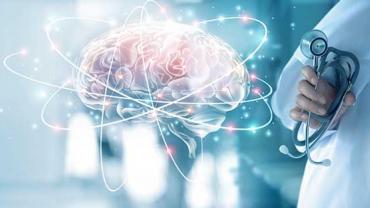
Traumatic brain injury, concussion, and chronic traumatic encephalopathy (CTE) have garnered attention in recent years owing to publicity surrounding chronic head injuries in athletes, as well as to injuries sustained by US military personnel during the course of prolonged armed conflicts. However, these types of injuries are not limited to pro football players and military servicemembers. No one is immune to everyday accidents or injuries during casual sports. In the US, TBI affects 1.5 million people annually, nearly half of whom are children and young adults.
There are no effective treatments for these devastating injuries, but research points toward some potentially helpful strategies. To start off with, the pathophysiology resulting from these injuries parallels some of the cognitive and motor defects observed in Alzheimer’s disease and other neurodegenerative disorders. The majority of research in this area has been done in animals, but results are interesting.
TBI resembles Alzheimer’s disease (AD) in that it results in reduced capacity of the brain to harness energy from glucose. Additionally, TBI may also be characterized by increased deposition of beta-amyloid, possibly as a protective mechanism, as it is increasingly believed to be in AD. Single, moderate-to-severe TBIs result in increased amyloid deposition, and repetitive mild TBIs—such as may occur during youth sports—result in still greater amyloid deposition. Other pathological changes associated with TBI include decreased ATP production in the brain, increased glutamate excitotoxicity, increased apoptosis and loss of neurons, and increased oxidative damage to structural proteins, lipids, and DNA. For these reasons, ketogenic diets, which are being explored for AD, are also being researched for potential use in those with TBI.
Being that there are currently so few effective therapeutic options for TBI, anything that might be of value is worth looking into. One such thing is the compound pyrroloquinoline quinone (PQQ). We have explored PQQ in the past, looking at its role in supporting mitochondrial health. As a refresher, PQQ is not classified as a vitamin or otherwise essential nutrient. Mammals don’t synthesize it but it’s believed to be important in mammalian nutrition and may even be required for normal growth and development. One paper claimed that PQQ may have been identified as a component of interstellar dust, hinting that “PQQ may have been present throughout early biological conception and evolution,” and that humans and other animals have had constant exposure to PQQ, albeit at apparently small concentrations.
PQQ is a cofactor for bacterial redox reactions and is a signaling agent for proteins kinases involved in differentiation of mammalian cells. The high redox recycling ability of PQQ may give it a pharmacological role in protecting against neurodegeneration. As a redox agent, PQQ is extremely stable and can participate in hundreds more reactions than other antioxidants such as ascorbic acid, quercetin and epicatechin.
Getting back to TBI, much of the damage and resulting physical and cognitive impairments associated with TBI may be a result of mitochondrial destruction or dysfunction in the brain. Rat studies suggest PQQ has a role in mitochondrial biogenesis. Experimental models of stroke and spinal cord injury show that PQQ attenuates neuronal cell death in part through decreasing activity of N-methyl-d-aspartic acid (NMDA) receptors. Other research indicates PQQ protects hippocampal neurons against glutamate-induced cell damage by scavenging reactive oxygen species and reducing calcium influx and caspase-3 activity.
In a study employing a rat model of TBI, researchers showed that administration of PQQ improved brain electrophysiological function (assessed via EEG) and increased the viability of astrocytes treated with glutamate. PQQ also decreased the number of autophagosomes, suggesting reduced autophagy. Other research looking at PQQ for TBI found that in a rat model, compared to controls not receiving PQQ, rats receiving PQQ had significantly improved performance in tasks evaluating spatial memory and learning, and had numerous beneficial changes to biochemical markers of neuronal viability. It should be noted, though, that this study injected PQQ intraperitoneally for 3 days before TBI, as the investigators had determined that administering it solely after TBI was ineffective.
PQQ is found in several foods, including soybeans, papaya, oolong and green teas, kiwifruit, bananas, green peppers, cabbage and parsley. It’s reasonable to suspect, however, that the levels needed to induce a therapeutic effect to potentially support neuronal function in humans would have to be achieved through supplementation. Levels in foods tested were in nanograms per gram, but amounts used in some of the animal studies were as high as 10 mg/kg.
PQQ appears to hold promise for neuroprotection, but more human research is needed to determine whether the effects seen in rats would translate to humans, and to ascertain what doses would be appropriate.